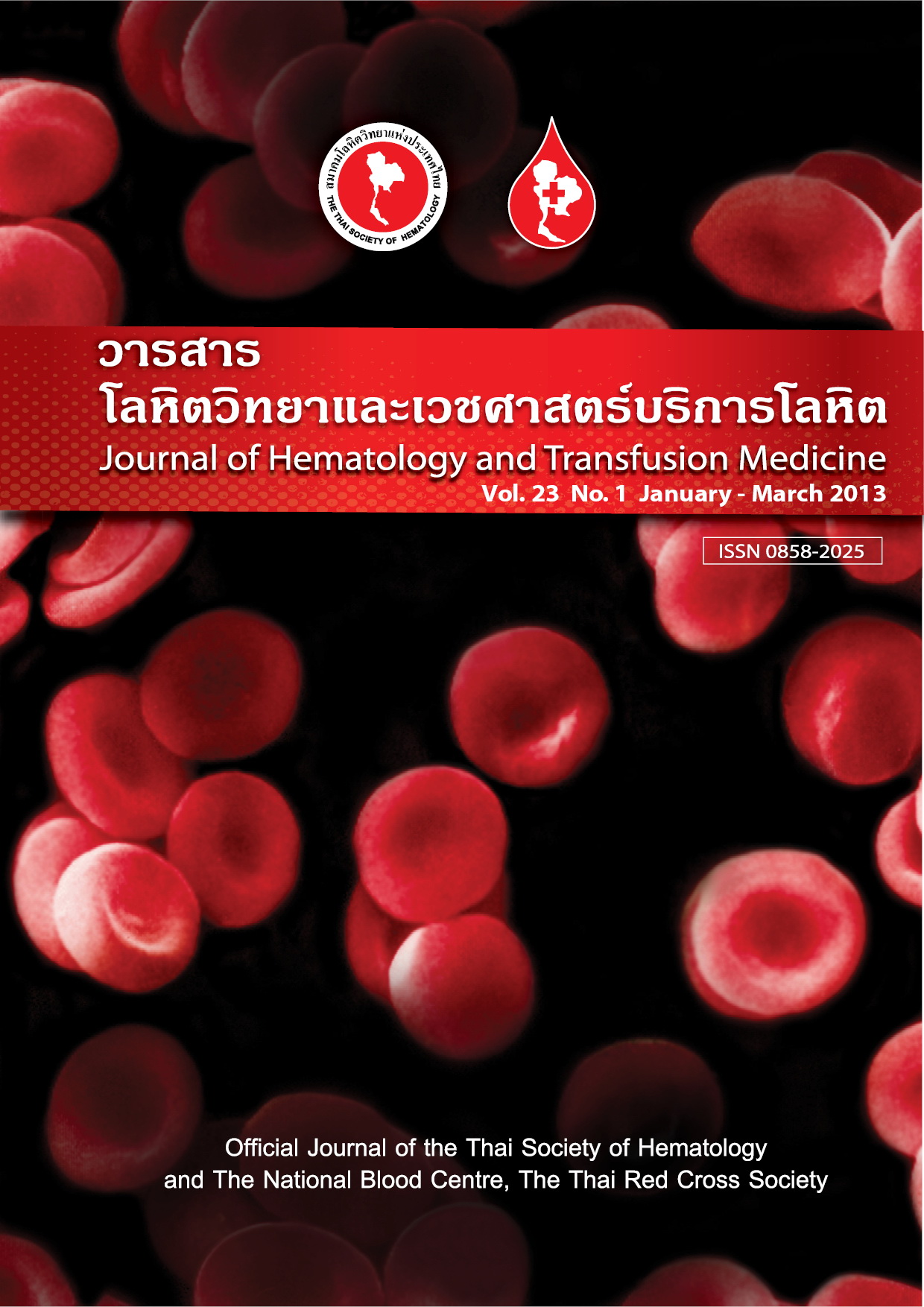Hepatosplenic T-cell Lymphoma
คำสำคัญ:
Hepatosplenic T-cell lymphoma, Diagnosis, Treatmentบทคัดย่อ
Abstract: Hepatosplenic T-cell lymphoma (HSTCL) is a rare type of T-cell lymphoma with poor clinical outcomes. Typical clinical features include a predominance of young male with fever, hepatosplenomegaly and cytopenia with the absence of appreciable lymphadenopathy. Diagnosis is based on examination of peripheral blood and histopathology of bone marrow, spleen or liver. In addition, immunophenotyping and cytogenetics are extremely helpful for establishing the diagnosis. Although there is a wide variety of chemotherapy regimen reported for the treatment of HSTCL patients, satisfactory response was rarely obtained. One of the promising results was achieved by the administration of high intensity cytarabine-platinum containing regimen followed by high-dose therapy (HDT) and stem cell transplantation. The role of post-remission therapy with allogeneic stem cell transplantation, a potentially curative therapy, is not clearly demonstrated. With paucity of evidence, no satisfactory recommendation could be made.Downloads
Download data is not yet available.
ดาวน์โหลด
ฉบับ
ประเภทบทความ
บทความฟื้นวิชา (Literature review)



